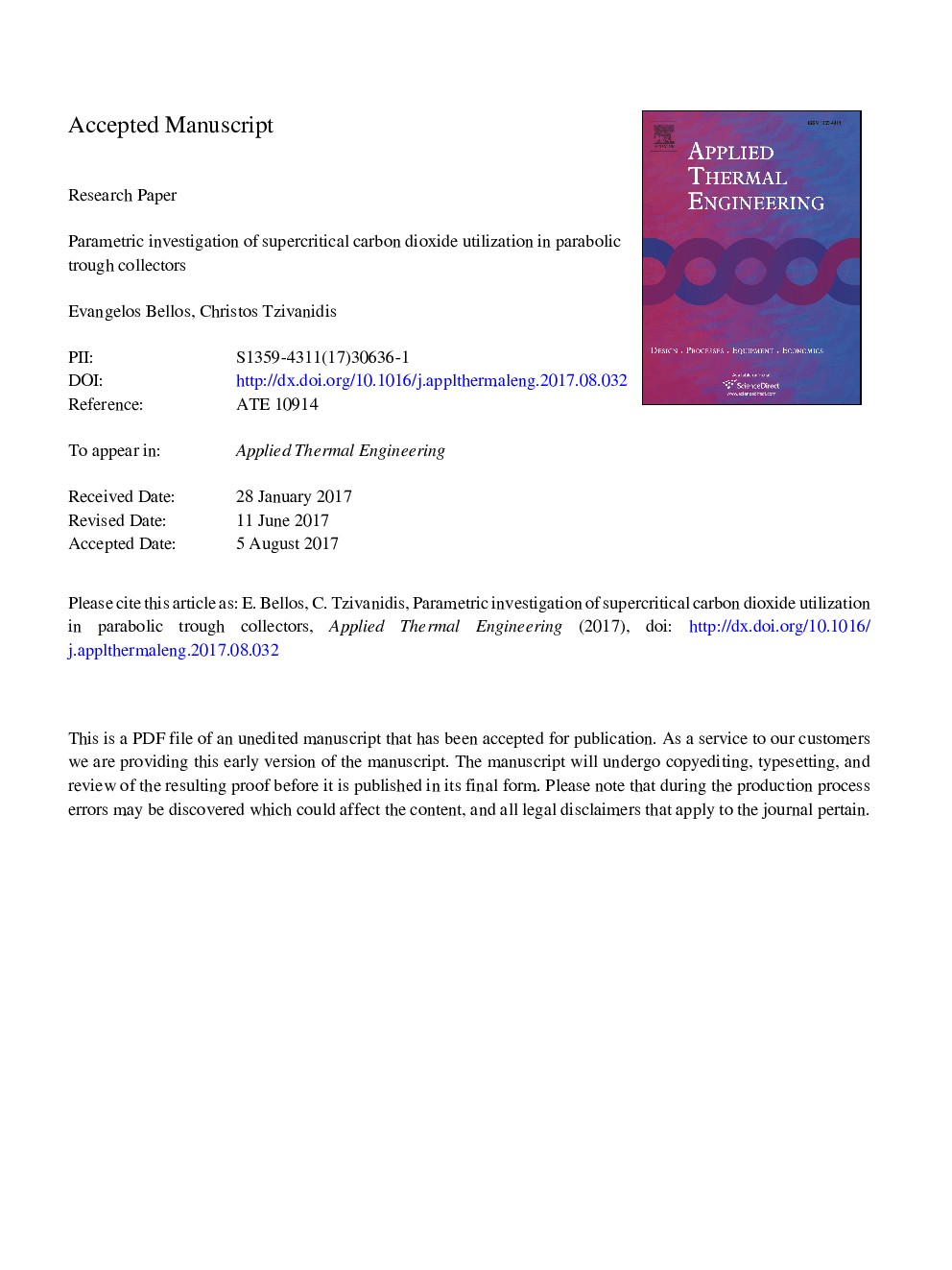| Article ID | Journal | Published Year | Pages | File Type |
|---|---|---|---|---|
| 4990758 | Applied Thermal Engineering | 2017 | 30 Pages |
Abstract
The use of supercritical carbon dioxide becomes more and more intense because of the higher thermal efficiency of thermodynamics cycles operating (Brayton and Rankine) with this working fluids. The objective of this work is to investigate the utilization of this working fluid in parabolic trough collector for various operating conditions. The pressure level, the inlet temperature and the mass flow rate are the examined parameters for the parametric analysis of the collector which is performed in energetic/thermal and exergetic terms. A thermal model is developed in EES (Engineering Equation Solver) and it is validated with literature data. According to the final results, low-pressure levels (80 bar) have to be used in low-temperature levels while higher pressure levels (200 bar) are proper for higher temperature levels. The global maximum exergetic efficiency is achieved for inlet temperature equal to 750 K and it is 45.3%. In the last part of this study, the efficiency map of the collector is introduced for evaluating the collector performance. This depiction combines the thermal and the exergetic efficiency with the inlet temperature as a parameter and it is a useful tool for determining the optimum operating region of the collector.
Related Topics
Physical Sciences and Engineering
Chemical Engineering
Fluid Flow and Transfer Processes
Authors
Evangelos Bellos, Christos Tzivanidis,
